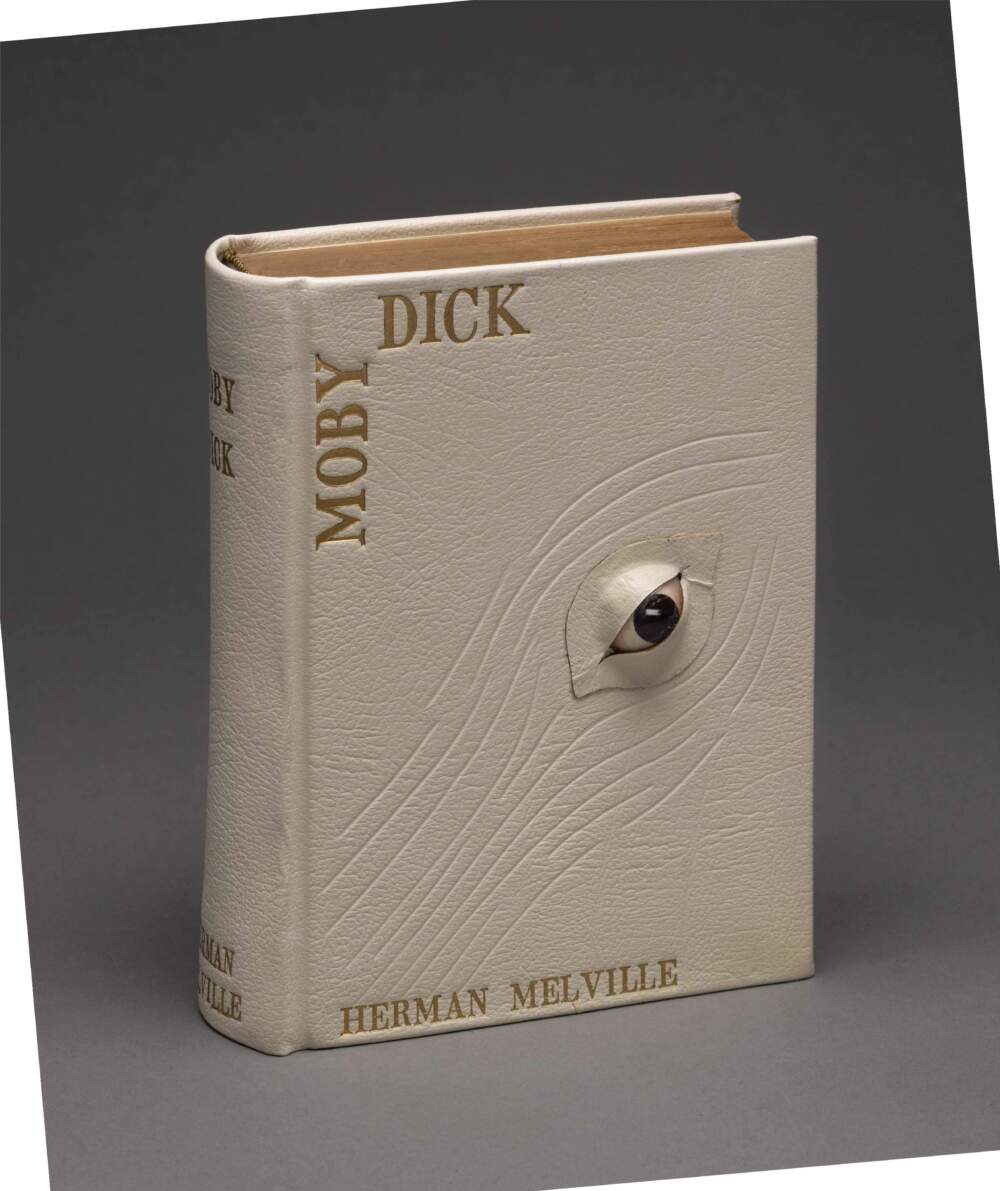Advertisement
Spring Art Guide
14 art exhibits to explore this spring
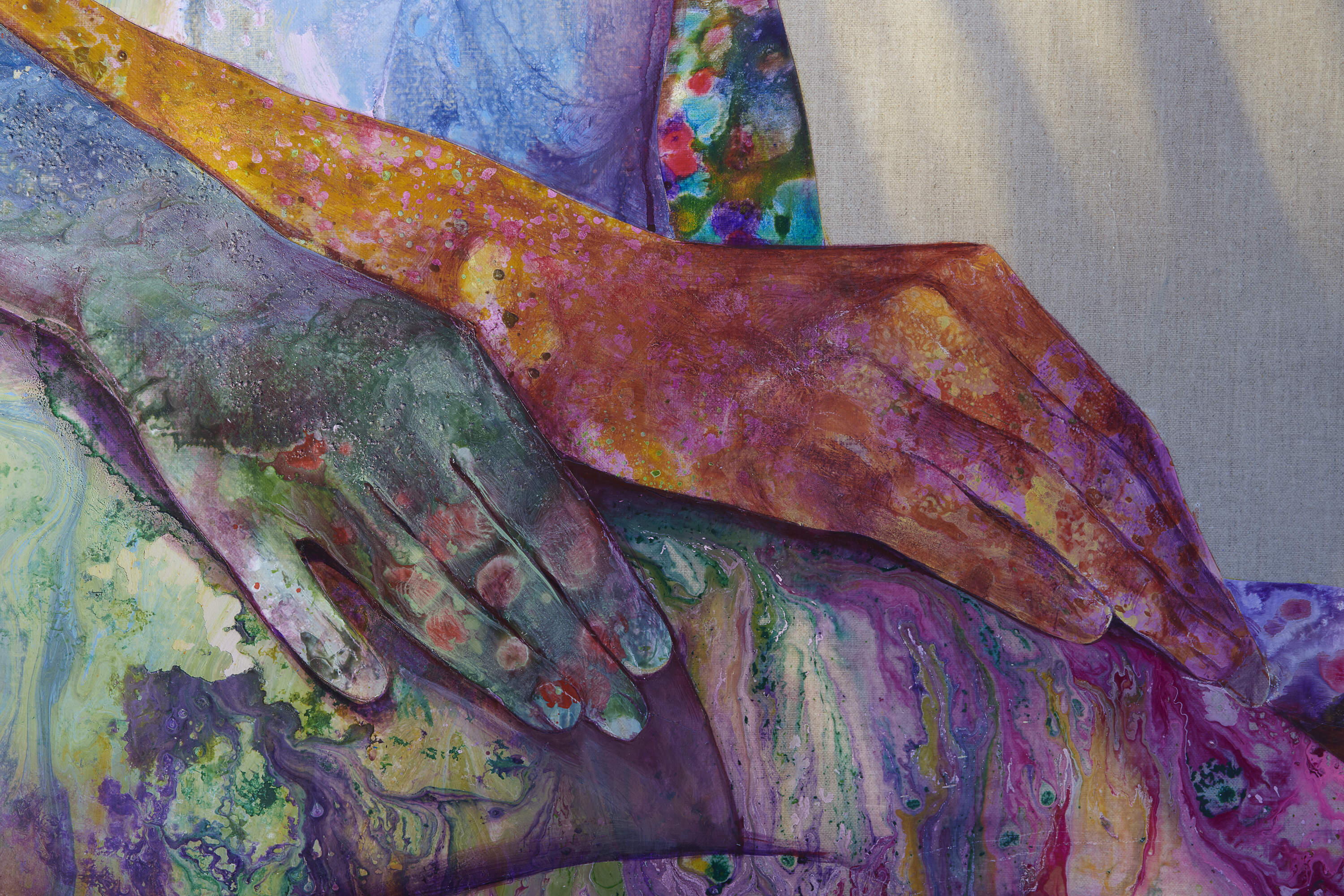
I often think of spring as a transitional season, the time between the crisp darkness of winter and the hot humid New England summer. When looking through the exhibits in this guide, you’ll likely see a common theme of transition as well. How did we go from depicting cities in hand-drawn maps to street photography? How did South Korea become a cultural powerhouse through the course of the 20th century? On a micro-level, how does an artist portray her life from day to night? We look at these times of transition not just to better understand the past, but also the present and future. Perhaps a little time with these works of art will change the course of your season for the better.
'Paper Cities'
The Clark Art Institute
Through June 23
“Paper Cities” brings together works on paper from 26 artists from drawings of European city life just after the invention of the Gutenberg press to mid-19th-century depictions of urban America. The exhibition goes beyond just displaying a wide variety in terms of time and geography. The works in this collection also come from a diversity of uses. A piece from 1694 titled “New Trip to Italy: with a memoir containing useful advice for those who want to make the same trip” from French writer and traveler Maximilien Misson was used by young aristocrats on their grand tour of Europe. Photographs from Berenice Abbott, a student of sculpture and celebrated portraitist, document New York City at a time of great architectural and societal upheaval in the 1930s. She captured exteriors of the New York Stock Exchange, the Flatiron Building and a mesmerizing study in light and shadow in “Under the El at the Battery, New York.” The Clark often pairs its exhibitions to complement one another, and this season is no exception.
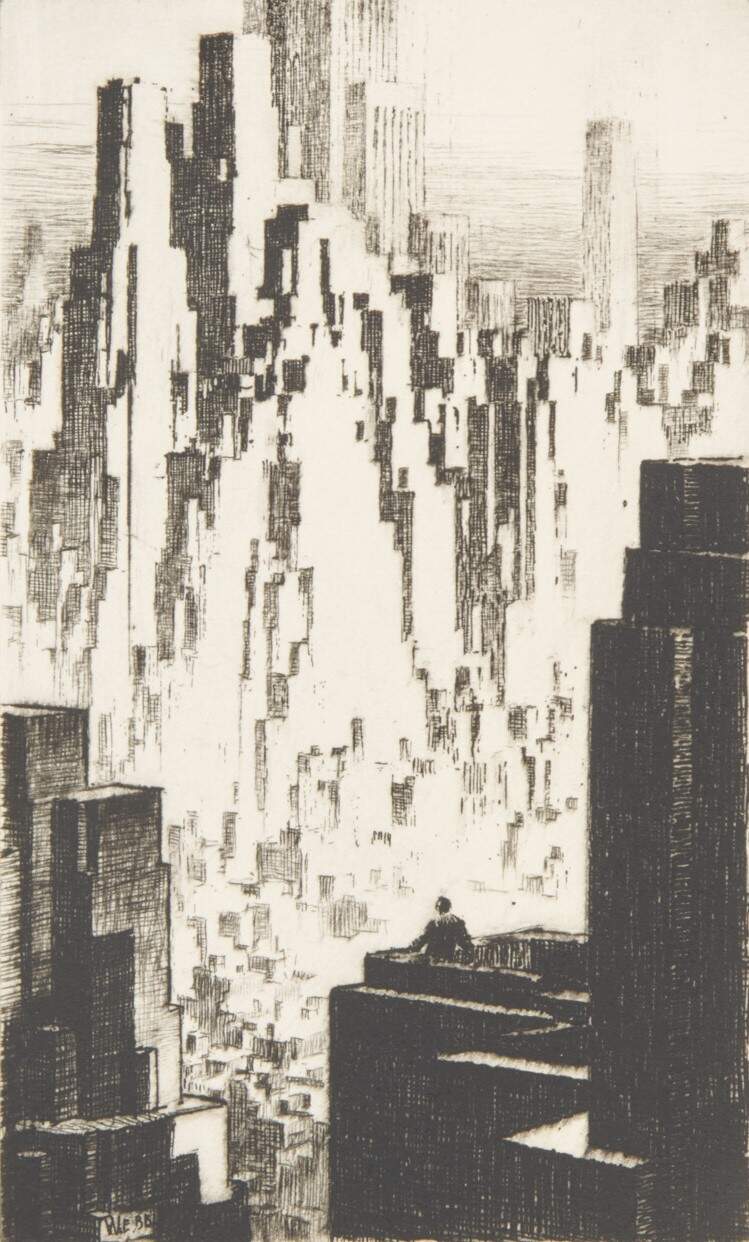
'LaToya M. Hobbs: It's Time'
Harvard Art Museums
Through July 21
"Carving Out Time" is larger than life. Or at least it can feel that way. The five scenes that comprise LaToya M. Hobbs’ intricate woodcut series are eight feet tall and, collectively, 60 feet wide. The piece depicts different parts of the artist’s day: morning, homeschooling, dinner, bedtime for the children and studio time. “Carving Out Time” is part of a continuing series titled “Salt of the Earth,” in which she portrays “the personification of Black women as salt in relation to their role as preservers of family, culture and community.” In addition to the Hobbs exhibit, the Harvard Art Museums also has a coinciding exhibit called “Future Minded,” showcasing over 60 newly acquired works from 30 artists, many of whom are alive today as the museum seeks to grow its collection of contemporary works.
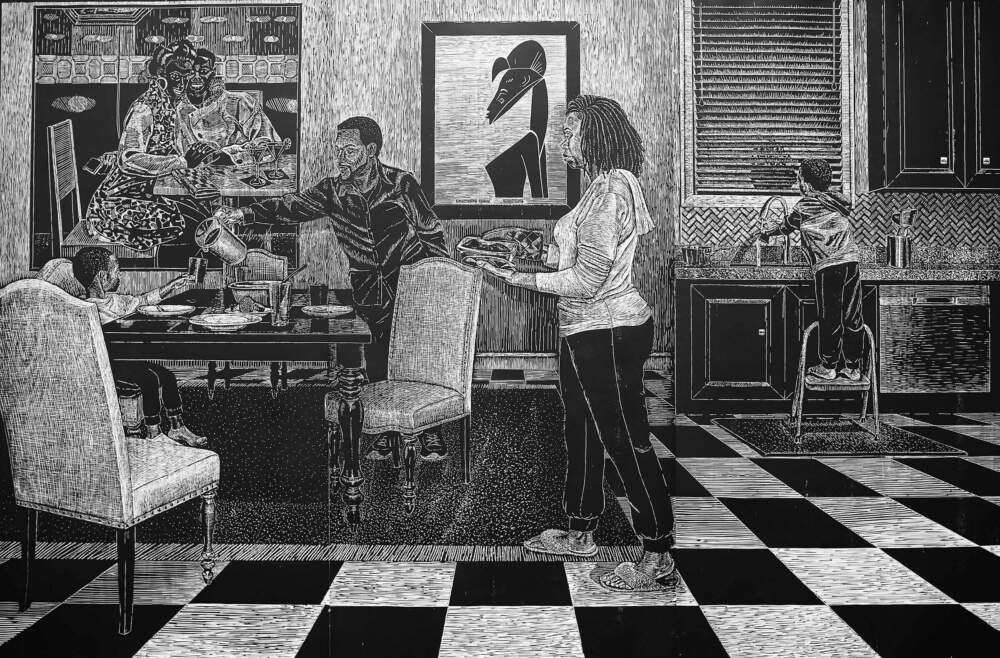
'Africa Rising: 21st-Century African Photography'
Fitchburg Art Museum
Through Feb. 23, 2025
The exhibit’s title, “Africa Rising,” refers in part to an economic phrase describing the continent’s financial boom since the turn of the millennia as well as the coinciding artistic swell. Many of the featured artists are in their 30s and 40s and grew up taking photos on digital cameras and phones. The works represent artists who were trained at fine arts institutions as well as those who taught themselves. A digital print from Ethiopian-born Aïda Muluneh shows a dry, rocky landscape with two figures in eye-poppingly bold blue. A black and white photo from South African-born Zanele Muholi shows a person gazing into the lens with what appears to be the frames of drums in front and on top of their head, worn as a crown. Altogether, the works in this exhibit put on display the effects of colonialism on identity, exploitation of the environment, as well as visions of feminine strength and Afrofuturism.
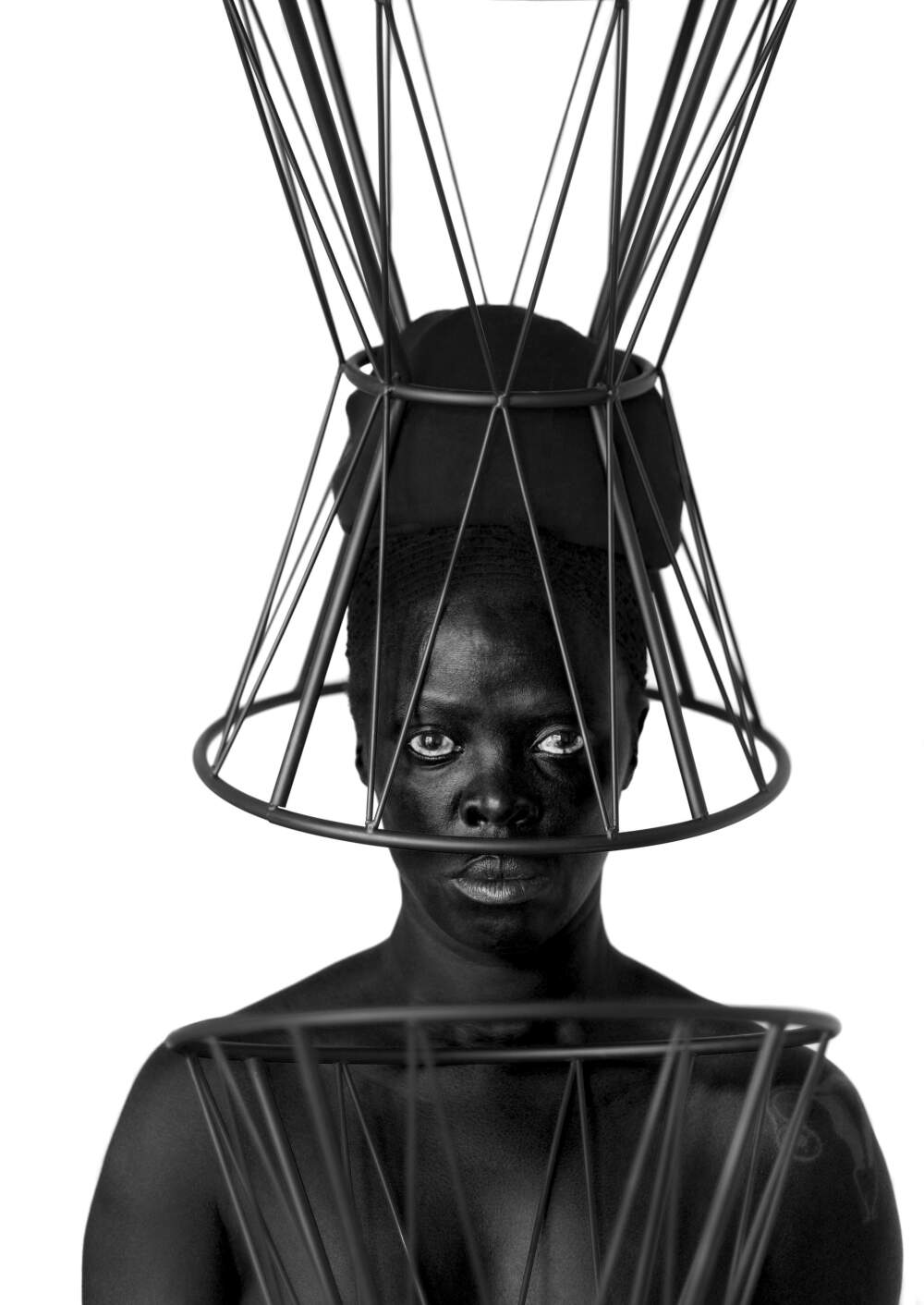
'Hallyu! The Korean Wave'
Museum of Fine Arts, Boston
March 24-July 28
A movie poster from the 2003 South Korean action-thriller “Old Boy.” A still image of South Korean rapper Psy performing on the “Today” show. Samsung’s SPH-M2500, also known as the first mp3-integrated mobile phone. These are just three of the roughly 250 artifacts from “Hallyu!,” or “Korean Wave,” referring to the country’s rise on the world stage. For a country over 6,000 miles away from the shores of the United States, South Korea has played an increasingly active role in both American and global culture. In 2012, Psy’s global hit “Gangnam Style” became the first video in YouTube history to reach 1 billion views. In 2020, the genre-bending film “Parasite” became the first foreign language film to win the Academy Award for Best Picture. When TV show “Squid Game” premiered on Netflix, it was the streaming service’s largest debut to date, drawing over 111 million viewers in its first four weeks. Through videos, costumes, pop culture ephemera, photographs and more, this exhibit portrays how the small country became one of the most successful cultural exporters of the 21st century.
Advertisement
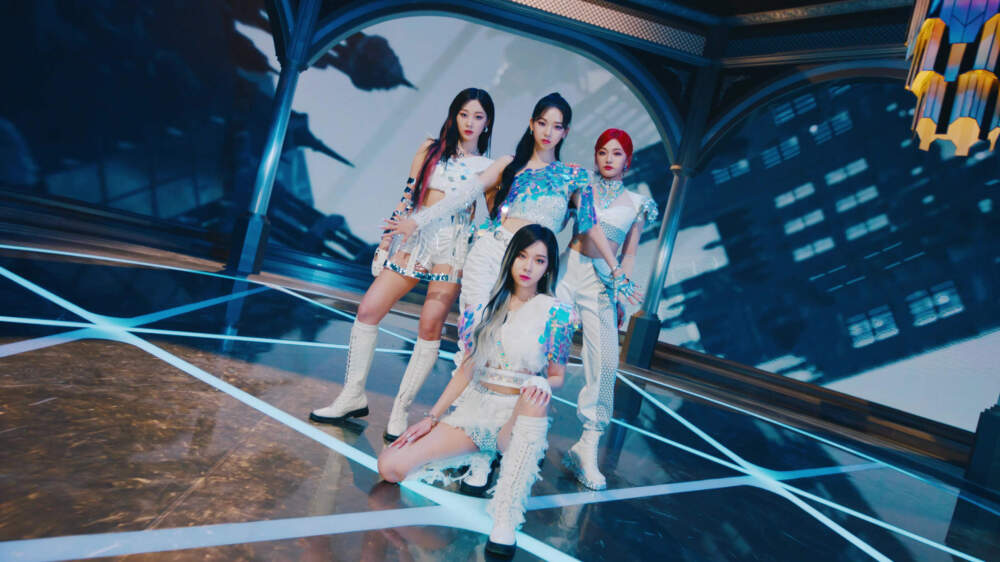
'Beau McCall: Buttons On!'
Fuller Craft Museum
March 30-Feb. 2, 2025
Do you know the Button Man? Maybe you know one of his many other aliases: Beau, Sir Buttons or Count Buttons. The artist Beau McCall has earned a reputation for using the fasteners in nearly all his work, which is often both visual and wearable. McCall started his career as an artist in the 1980s after moving to Harlem from Philadelphia. He drew inspiration from a few buttons he had in his pocket that he took from his mother’s collection, and by 1988, his wearable art debuted at the Harlem Institute of Fashion. From there, his works appeared in PBS’ 1991 production of George C. Wolfe’s “The Colored Museum” as well as the 1992 film “Quartier Mozart.” This exhibit at Fuller Craft Museum is his first retrospective. The themes of the show are “Buttons on the Body,” “Buttons on the Mind,” “Buttons on the Soul” and “Buttons Off.” In addition to his upcycled button-covered fabrics, there will be a cast-iron bathtub, a life-sized Kool-Aid Man and some never-before-seen archival materials. Also opening at Fuller Craft this spring: “Chris Bathgate: The Machinist Sculptor,” an exhibit that blends art, technology and robotic aesthetics (May 18-Nov. 3).
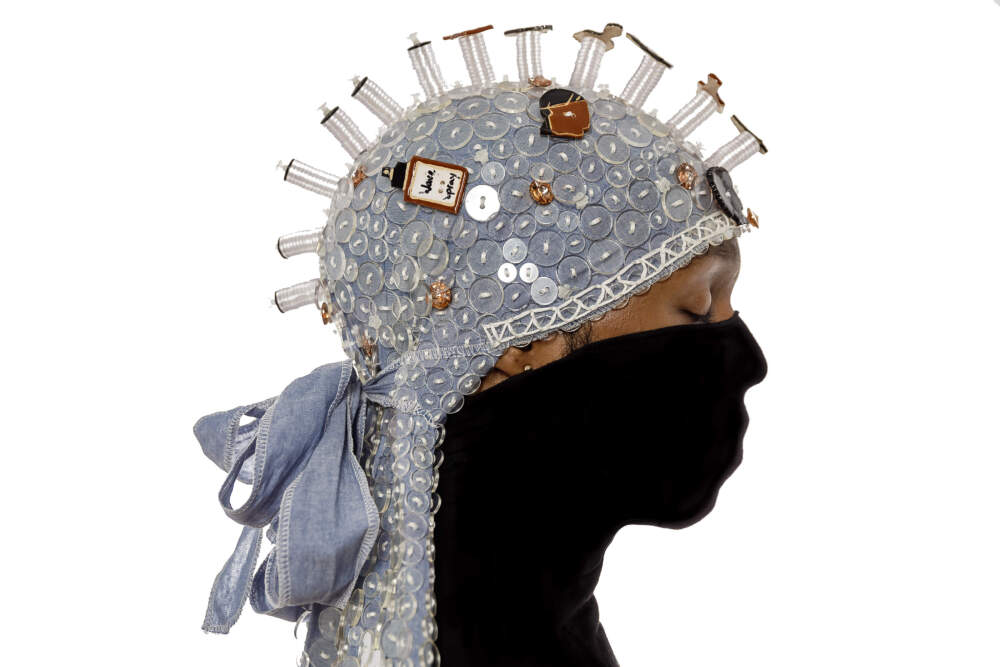
'Basel Abbas and Ruanne Abou-Rahme: Only sounds that tremble through us'
MIT List Visual Arts Center
April 4-July 28
Starting in the early 2010s, Basel Abbas and Ruanne Abou-Rahme have used social media to gather recordings of communal song and dance from Iraq, Palestine and Syria. In 2020, they released this multimedia collection as part of an ongoing piece titled “May amnesia never kiss us on the mouth,” which partially lives online, free for public viewing. This exhibit at MIT List Visual Arts Center will feature a site-specific installation of this work. The artists added to their video archive by working with dancers and musicians, who reacted to the previous recordings from the collection. “Only sounds that tremble through us” will be a homecoming for half of the duo. Abou-Rahme was born in Boston, and Abbas in Cyprus. The two have been collaborating as filmmakers since 2007.
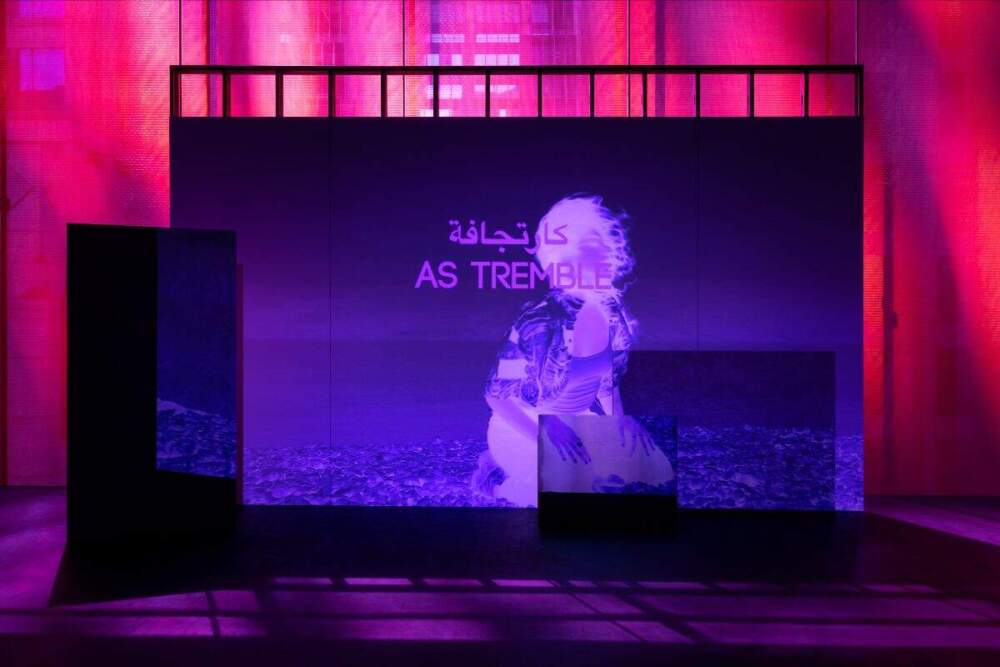
'Firelei Báez'
Institute of Contemporary Art/Boston
April 4-Sept. 2
Firelei Báez is a multimedia artist born in the Dominican Republic and based in New York City. She works in paintings as well as large-scale site-specific installations. The exhibit serves as a return for Báez, who in 2021 created a massive sculpture for the ICA Watershed that visitors could walk through and explore. At the time, it was her largest sculptural installation to date, and this exhibit will mark another achievement in Baez’s career — it will be the first museum survey of her work. The show will feature about 40 works: another grand-scale installation that visitors can enter; a colonial map titled “Man Without a Country (aka anthropophagist wading in the Artibonite River” made up of 225 pages of deaccessioned textbooks; and 31 self-portraits titled “Can I Pass? Introducing the Paper Bag to the Fan Test for the Month of July” in which Báez portrays herself with monochrome wooden cutouts of her face with a different hairstyle for each day of the month. Throughout all her works, there’s an offering of alternate narratives from what’s been told in history books, and rather than asserting one singular narrative, she presents a multitude for the viewer to interpret themself.

'In the Round: 20th Century Cape Ann Sculpture'
Cape Ann Museum
April 6-June 23
Following the success of last year’s Edward Hopper exhibit, the Cape Ann Museum has another show with local ties. This time, with sculptors of Cape Ann, mostly artists of the early 20th century. A 1946 plaster from George Demetrios titled “Atomic Peace” shows two men symmetrically interlocking their arms. A plaster study of an elk by Katharine Lane Weems was modeled in 1931 and cast posthumously in 1998. A 1933 sculpture by Walker Hancock called “The Diver” puts the artist’s ability to present muscle and tone on display. In addition to works from decades ago, there will also be at least one notable work from this century: Morgan Faulds Pike’s plaster scale model for The Gloucester Fishermen’s Wives Association memorial, which was installed on Stacy Boulevard in Gloucester in 2001.
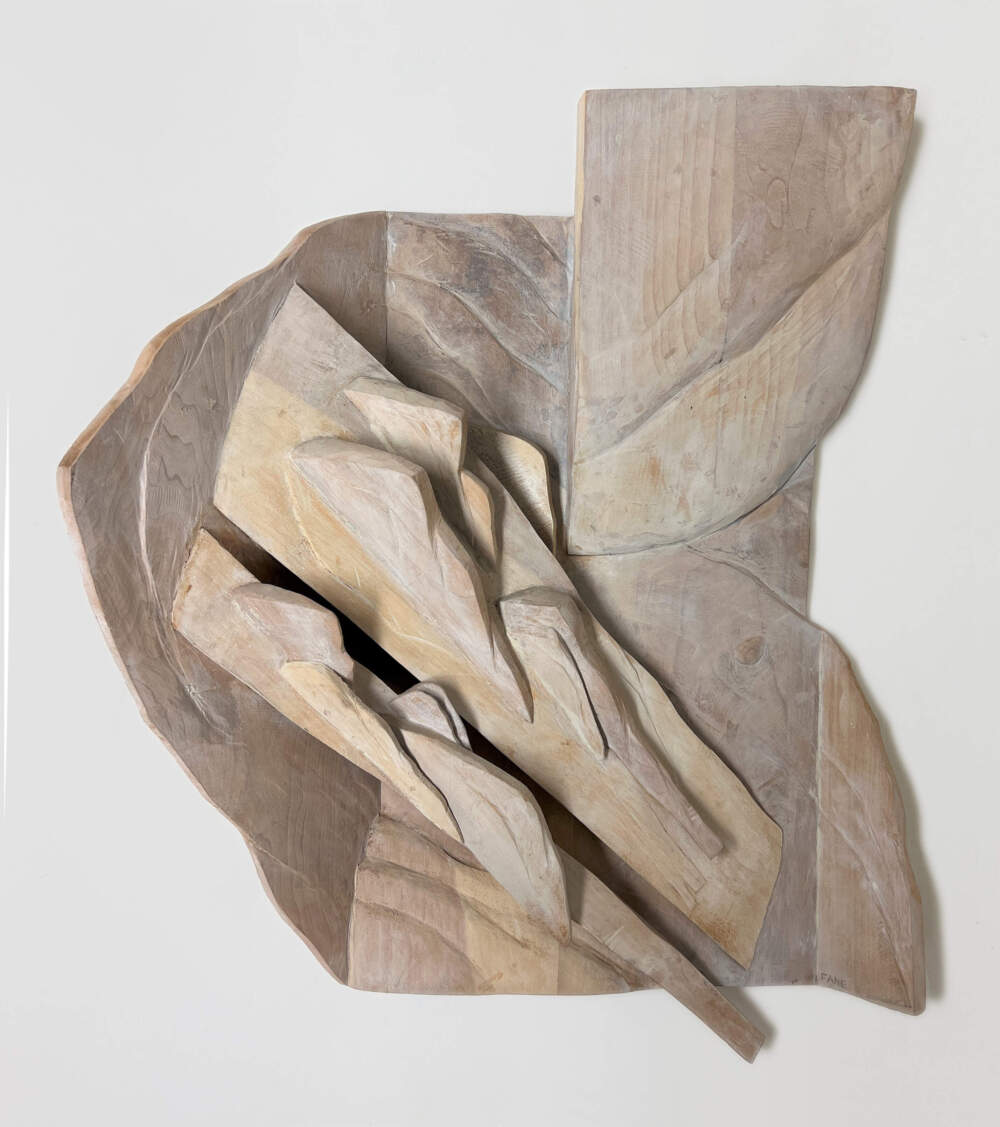
'New Terrain: 21st-Century Landscape Photography'
Worcester Art Museum
April 6-July 7
The way we look at the world around us says a lot. This exhibit at the Worcester Art Museum uses works of photography, weaving, collage and more to show the different ways artists have viewed and depicted landscapes since the turn of the millennia. There are even materials such as rusted cans and lake water included in “New Terrain.” The exhibit will include four themes: non-traditional applications of photo-based processes; technology; history and memory; and identity. Nine of the works are recent acquisitions by the Worcester Art Museum. One comes from Wu Chi-Tsung of Taiwan, who uses cyanotype photography (a cameraless technique using chemical reactions) to create a layered image of what can either be seen as a wave or snowy mountain. Chinese artist Yang Yongliang uses high-quality video to capture the mesmerizing movement of clouds and water. In all, these works show how capturing our surroundings has changed over the last quarter century and how artists are using creative methods to try and create a stronger connection between audiences and the natural world.
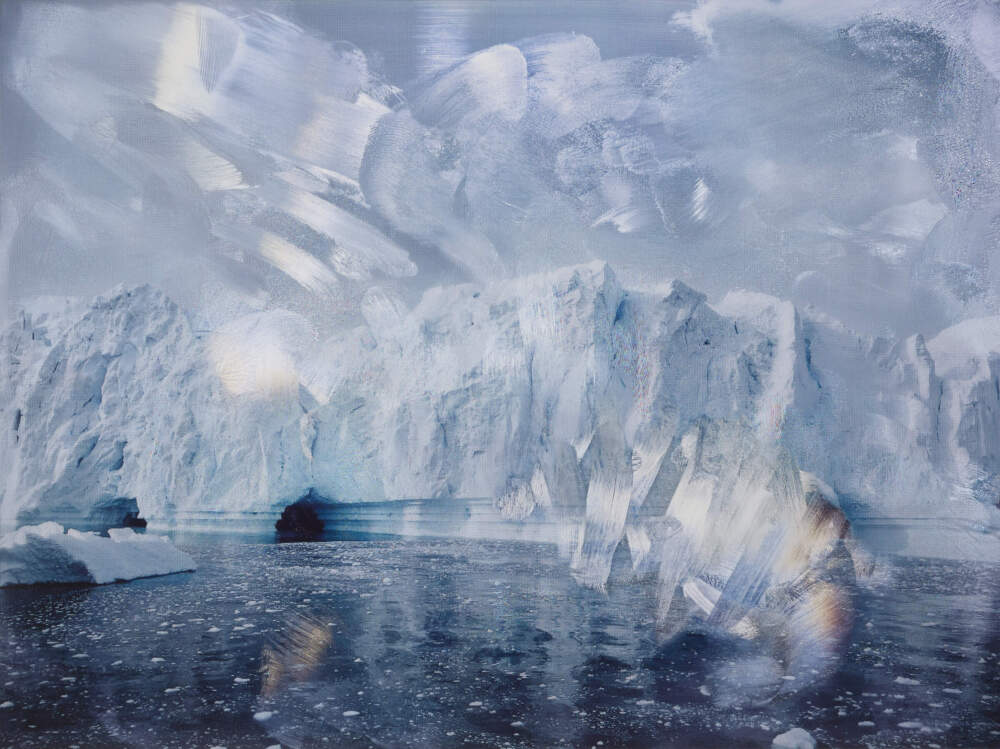
'Ethiopia at the Crossroads'
Peabody Essex Museum
April 13-July 7
Spanning almost 2,000 years, this exhibit explores the artistic practices of Ethiopia from origin to present day. The country has played a unique role in geography and history. At the intersection of Europe, Africa and the Middle East, Ethiopia is and has been home to people of many different ethnicities and religious backgrounds. The Aksumite Empire in current-day Ethiopia adopted Christianity in the mid-4th century, and this exhibit features religious artifacts spanning the years since. One object, an inscribed limestone with connections to Christianity, goes as far back as the mid-1st century. There are pendant and processional crosses, Christian and Islamic manuscripts, icons and clothing. The exhibit’s roughly 200 objects show the geo-cultural influences on Ethiopia through the millennia, and even features art from the current day, including a series of striking photographs from Aïda Muluneh. While at the museum, you may want to see one of the other offerings: the exhibit “Studio Glass” opens May 18 and highlights over 40 of the “most influential” glass artists in the 20th and 21st centuries (on view through December 2027).
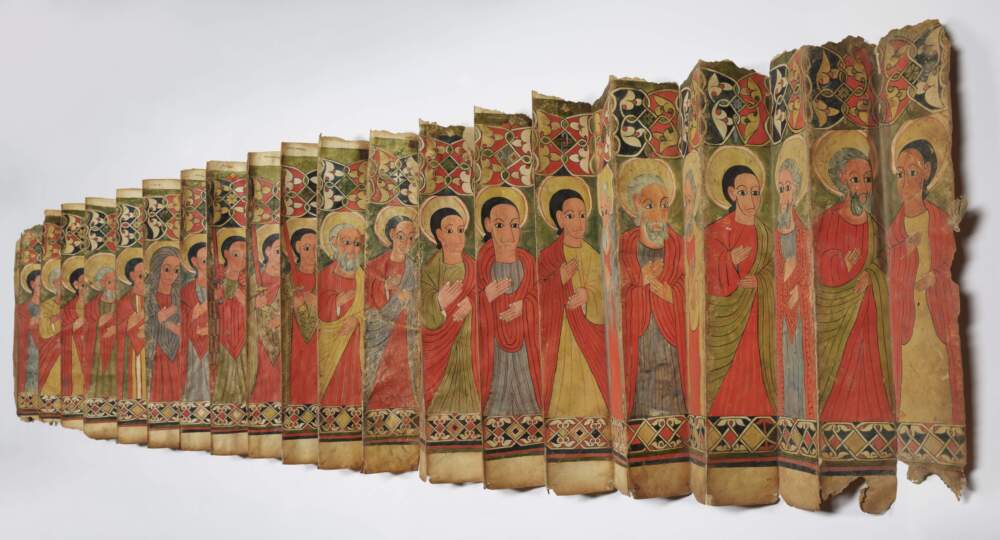
'Dress Up'
Museum of Fine Arts, Boston
April 13-Sept. 2
On the heels of the widely popular “Fashioned by Sargent,” MFA visitors will soon slip into yet another fashion forward exhibit. “Dress Up” features over 150 objects of fashion and jewelry from the 20th and 21st centuries. There’s a photo from 1957 of a woman looking at herself in a mirror as she tries on a hat in Foley’s Department Store in Houston, Texas. A 1931 photo shows a behind-the-scenes vantage of a fashion shoot in Vogue’s Paris studio. As interesting as the photos are, most of the exhibit is object-focused: bracelets, jackets, dresses, earrings, shoes and more. One necklace from 2013 simply reads “HELP.” A 1980s purse in the shape of Minnie Mouse uses black suede and a practical velcro flap. Together, the exhibit puts into view the sometimes odd collection of materials and ideas people use to not just dress, but communicate who we are. Running concurrently is the exhibit “Songs for Modern Japan: Popular Music and Graphic Design, 1900-1950” examining Japanese culture from 1900-1950 through a very specific lens: the covers of sheet music. It will include roughly 100 sheet music covers to show how culture and movements shaped popular art and consumerism during this historic half-century.
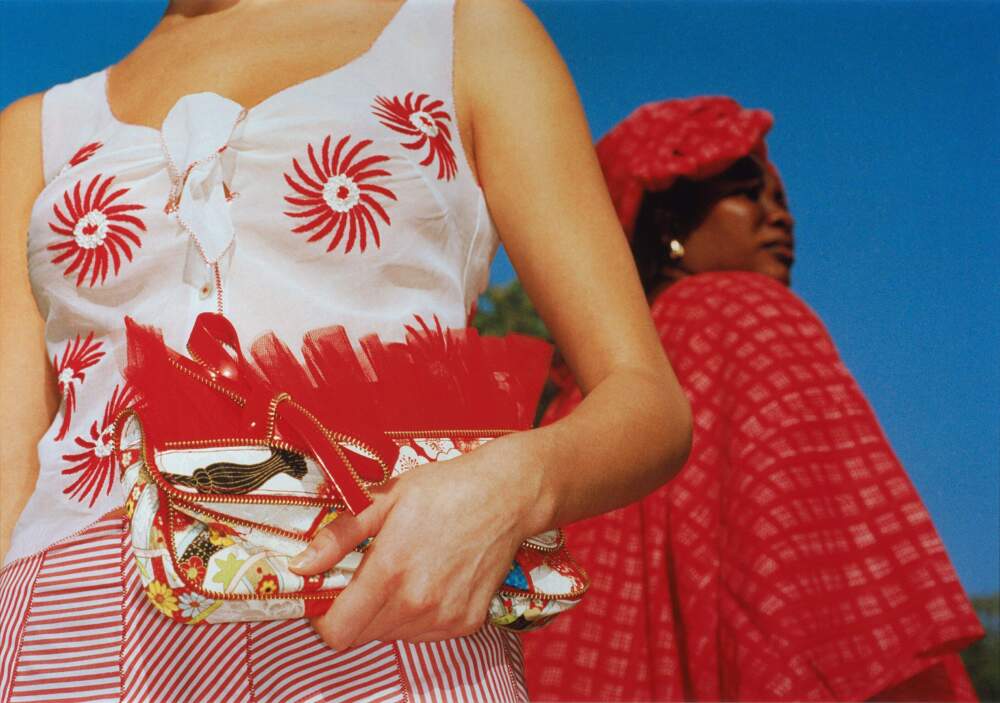
'Kathia St. Hilaire: Invisible Empires'
The Clark Art Institute
May 11-Sept. 22
In this exhibit, Haitian American artist Kathia St. Hilaire draws comparisons between the visible empires of her family’s past and the less overt, more understated effects of imperialism that persist today — as is evidenced by the current crisis in the country. Her parents immigrated to the U.S. from Haiti, and that international perspective appears throughout her subject matter. One of her series, “Caco,” features three different leaders from the political movement of the same name that resisted American occupation. St. Hilaire depicts these historical accounts with a unique combination of materials. In her work featuring rebel leader Rosalvo Bobo, she uses skin lightening cream packaging, steel, banknotes, banana stickers and tires. Between the personal inspirations and layered textures, St. Hilaire’s artwork challenges American narratives and understandings of empires with visual appeal: a style that she describes as “magical realist.”
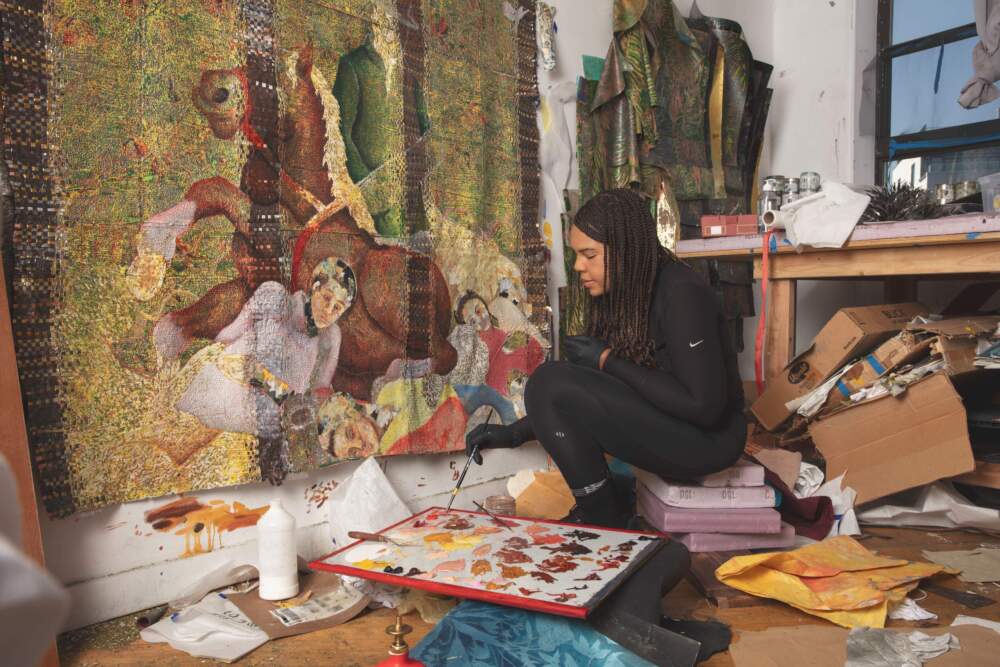
'Osman Khan: Road To Hybridabad'
MASS MoCA
May 25-March 2025
One of the most fascinating aspects of folk art is how it reinvents itself with each generation. In “Road to Hybridabad,” Osman Khan puts his modern take on classic figures from American, South Asian, Middle Eastern and Muslim culture and folklore. It’s a blend of centuries-old fantasy and technology of today. There’s a flying carpet with the help of drones, a character from the classic folktale collection “The Thousand and One Nights” is brought to life using the help of artificial intelligence and an animatronic djinn, or genie. This is the first solo museum exhibition for the Detroit-based artist of a new body of work. His work has appeared in the Socrates Sculpture Park in Queens, New York, the Chicago Architecture Biennale and the Shanghai Biennale.
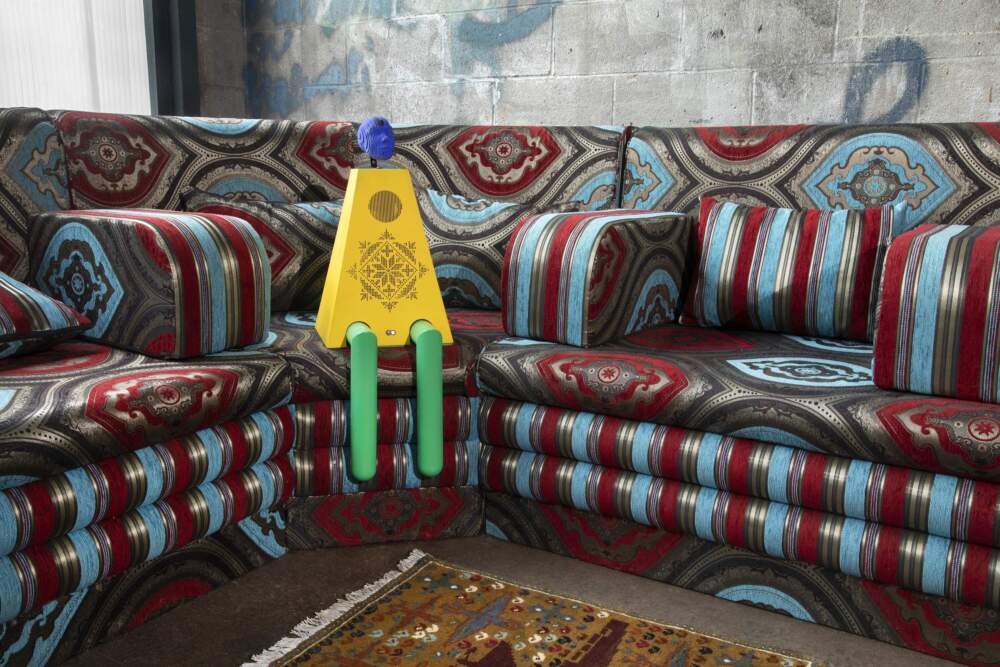
'Draw Me Ishmael: The Book Arts of Moby Dick'
Peabody Essex Museum
June 1-Jan. 4, 2026
The opening words of Herman Melville’s “Moby-Dick” beckon to be read aloud: “Call me Ishmael.” The classic text has long been studied, celebrated and criticized in and out of classrooms. What’s indisputable is that the whale tale has engaged readers across generations and continents. This exhibit focuses on one particular aspect of Melville’s work: the book art. Drawing almost entirely from the Peabody Essex Museum’s own Phillips Library, the exhibit has illustrations, binding designs and typography all to show the different ways that Melville’s story has been presented. In all, there are about 50 versions of the book, including one where the text has been translated into emojis as well as a pop-up book. It’s as much about how Melville’s novel has been presented in book form as it is about the story itself.
